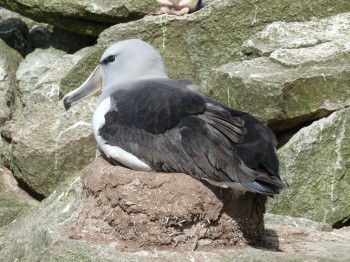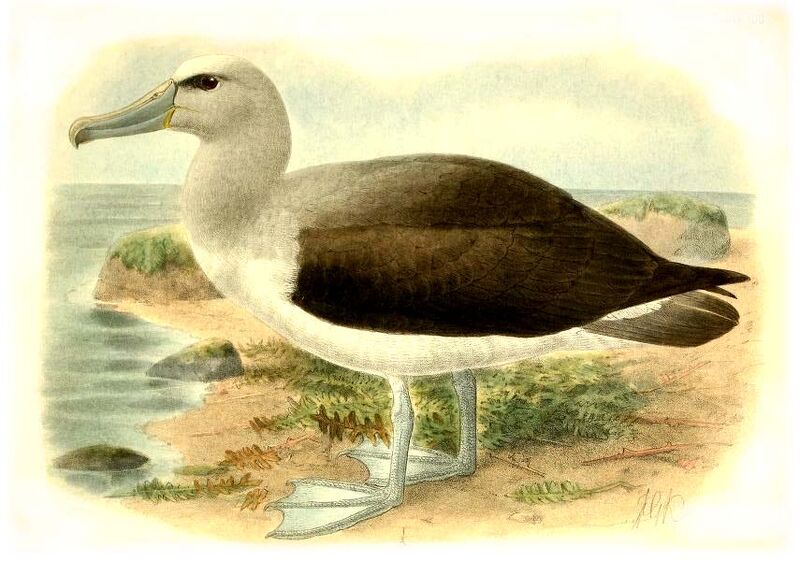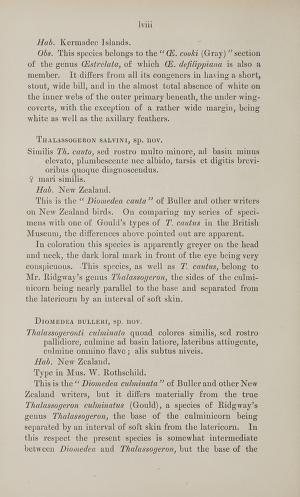
Osbert Salvin FRS (25 February 1835 - 1 June 1898)
Salvin’s Albatross Thalassarche salvini was named after the 19th Century English ornithologist and entomologist Osbert Salvin FRS by Lord Lionel Walter Rothschild in 1893 (as Thalassogeron salvini sp. nov.). Rothschild renamed the bird, previously known as the Shy Albatross T. cauta, because “In coloration this species is apparently greyer on the head and neck, the dark loral mark in front of the eye being very conspicuous” (click here and see below).

A Salvin’s Albatross on its nest on the Western Chain, Snares Islands, photograph by Paul Sagar
In 1874 Salvin was appointed as the first Strickland Curator at the University of Cambridge; three years previously he had become editor of the British Ornithologists’ Union (BOU) journal The Ibis, a position he held for a decade He was a Fellow of the Royal Society, and also of the Linnean, Zoological and Entomological Societies, and at the time of his death was Secretary of the BOU. The Godman-Salvin Medal, an award instituted by the BOU in 1919 as “a signal honour for distinguished ornithological work”, is named after him and Frederick DuCane Godman. An interesting connection is that the medal was awarded over a century after Salvin’s death to the well-known albatross researcher and conservationist John P. Croxall CBE, FRS in 2004, who was actively involved with ACAP in its early years and chaired BirdLife International’s Global Seabird Programme.

A signed photograph of Osbert Salvin in his later years
The globally Vulnerable and Nationally Critical Salvin’s Albatross is endemic to New Zealand, where it breeds on the sub-Antarctic Bounty Islands and the Snares Western Chain with an estimated total breeding population of around 52 000 pairs. Alternative names appearing in the literature for Salvin’s Albatross include Bounty Island Albatross and Grey-backed Albatross (or Mollymawk), although both seem to be little used. Salvin’s Albatross, by Dutch illustrator Johannes Gerardus Keulemans, from A History of the Birds of New Zealand by Walter Buller
Salvin’s Albatross, by Dutch illustrator Johannes Gerardus Keulemans, from A History of the Birds of New Zealand by Walter Buller
This is the second in an occasional series that considers how eponymously named ACAP-listed albatrosses and petrels came to be named. The first in the series addressed Buller’s Albatross T. bulleri. The next in the series will be the on Black or Parkinson’s Petrel Procellaria parkinsoni.
Reference:

Rothschild, W. 1893. THALASSOGERON SALVINI, sp. nov. Bulletin of the British Ornithologists' Club 1(10): lviii.
John Cooper, Emeritus Information Officer, Agreement on the Conservation of Albatrosses and Petrels, 04 June 2024

 English
English  Français
Français  Español
Español